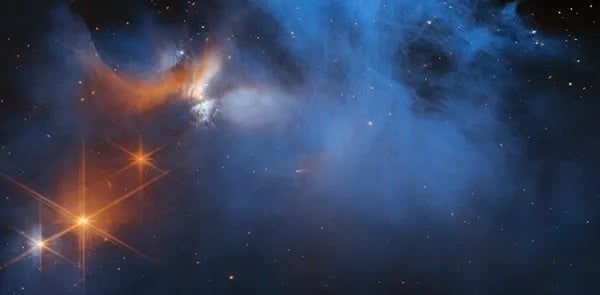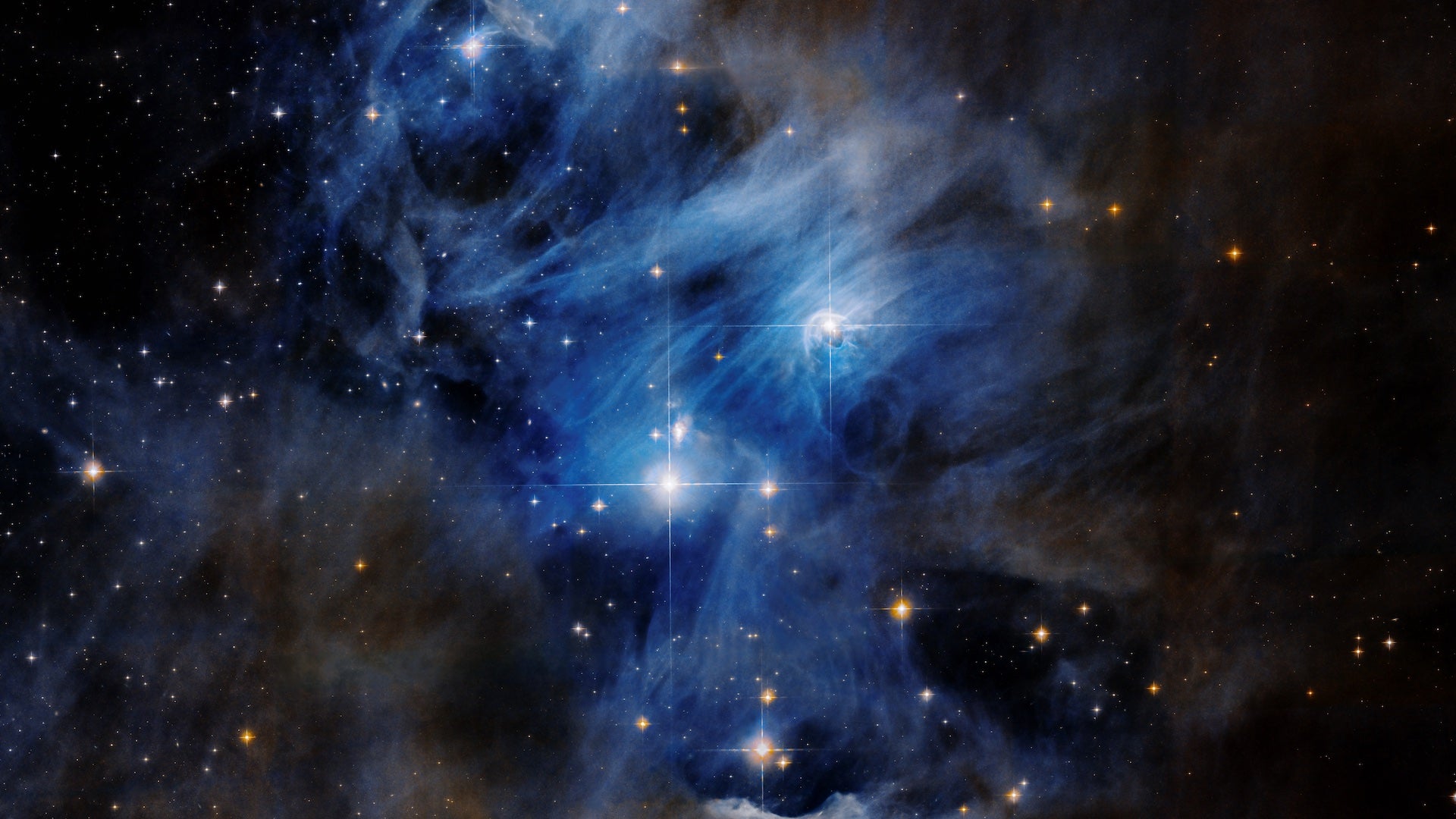
A star about 600 light-years away is giving astronomers a front-row view to the environments in which rocky planets like Earth form around the most abundant stars in the universe.
Called ISO-ChaI 147, this young, low-mass star is located in the Chamaeleon I star-forming cloud, which contains some 200 to 300 infant stars. ISO-Chal 147 is a red dwarf star, which are low-mass stars that burn through their fuel supply slowly and far outlive any other kind of star in the universe. They also far outnumber other stars, making up about 75 percent of stars in the Milky Way. ISO-Chal 147 in particular is about 11 percent the mass of the Sun, or 0.11 solar masses, and is just 1 million to 2 million years old.
Planetary building blocks
The new study, published today in Science, is less interested in the star itself than in what’s around the star: a protoplanetary disk of gas and dust, which will eventually turn into planets. Because red dwarf stars work with disks containing less material than larger stars, they tend to more readily make small, rocky planets, rather than gas giants like Jupiter.

Study author Aditya Arabhavi, an astrophysicist at the University of Groningen in the Netherlands, tells Astronomy: “We have not detected any (forming) planets in this system, but planet formation is expected to begin very early in the disk evolution,” she says. “It is unlikely that giant planets could form in such disks … [or] carve gaps in the disk.”
Dominated by carbon
Although the composition of the disks around higher-mass stars is well studied, astronomers don’t know as much about the makeup of the material lurking in the disks of low-mass stars like ISO-Chal 147. Using the James Webb Space Telescope (JWST), Arabhavi’s team found its protoplanetary disk is rife with carbon-based molecules and relatively low in those containing oxygen. The inner regions of the disk are either low in silicates or contain larger grains of dust. Additionally the disk is so small that even powerful ground-based observatories like the Atacama Large Millimeter-submillimeter Array in Chile are unable to pick it up.
“The main finding in our study is that the chemistry is dominated by carbon-rich gas (with all detected molecules containing carbon), with a C/O [carbon-to-oxygen] ratio much higher than unity, whereas the disks around Sun-like stars are generally oxygen rich with strong water emission in the spectrum,” Arabhavi says.
Should planets form there, the system will be quite different from our own, and not just because of the size of the star. With so little oxygen, the atmospheres that might develop around any worlds there would not be Earth-like. But Arabhavi says this would only be true of a planet’s primordial atmosphere, which is often lost or blown away by the parent star. Any secondary atmosphere that developed later would be determined by the composition inside the planets, which itself depends on a couple factors.
The gases present in ISO-Chal 147’s disk now are hydrocarbons, or molecules rich in hydrogen and carbon. The team isn’t sure why, but have two working theories: Either solid carbon grains in the inner regions have been vaporized, pumping up the amount of carbon gas present such that it dominates the spectrum; or any oxygen that was present disappeared, having been transported inward and ultimately falling into the star. “Determining which of these is the dominant process is crucial to understand the resulting planetary composition,” Arabhavi says.
If it’s the latter, it means that planets that form around low-mass stars like this are likely to be much more carbon-rich than our solar system’s terrestrial worlds, which in turn might have consequences in the hunt for Earth-like planets — and Earth-like life — beyond our solar system.









